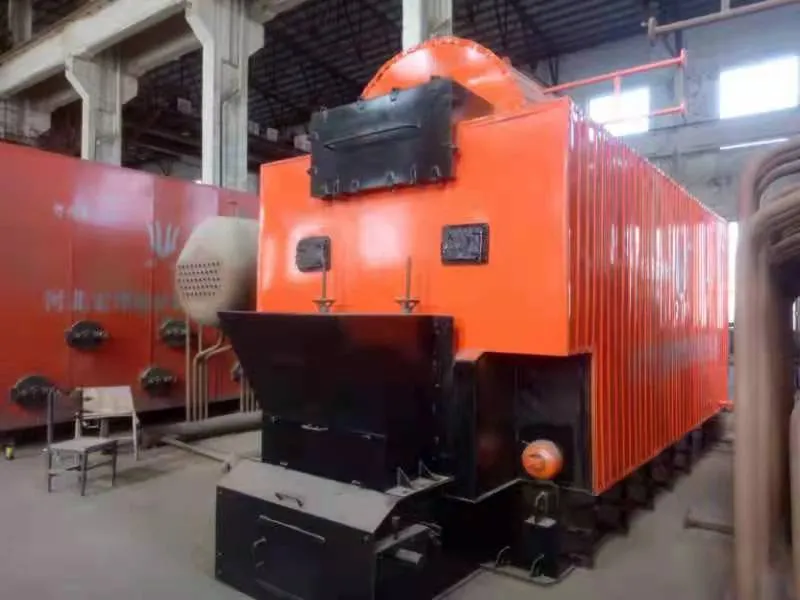
12월 . 04, 2024 16:58 Back to list
steam boiler installation guide
Steam Boiler Installation Guide
Installing a steam boiler is a critical process that requires careful planning, precise execution, and adherence to safety protocols. This guide aims to provide essential steps and considerations to ensure a safe and efficient installation of a steam boiler.
1. Understanding the Basics
Before embarking on the installation process, it is important to understand the fundamental components of a steam boiler. Steam boilers are typically categorized into three types fire-tube, water-tube, and electric. Fire-tube boilers have hot gases passing through tubes surrounded by water, whereas water-tube boilers have water flowing through tubes heated by fire. Electric boilers use electrical energy to produce steam. Choosing the right type of boiler for your needs is vital for efficiency and safety.
2. Pre-Installation Planning
The first step in the installation process is thorough planning. This includes assessing the space where the boiler will be installed. Ensure that the area is well-ventilated and has enough room for maintenance and operational access. Check local building codes and regulations, as these will dictate specific requirements for your installation.
It is crucial to calculate the boiler's required capacity based on your heating needs. This calculation is often measured in BTUs (British Thermal Units). An undersized boiler will struggle to meet demand, while an oversized one will waste energy.
3. Site Preparation
Prepare the installation site by ensuring that the foundation is level and sturdy enough to support the weight of the boiler, water, and steam. Most manufacturers recommend a concrete pad for installation. Additionally, the area should be cleared of debris and other obstacles, allowing easy access for installation personnel.
The installation process typically begins with positioning the boiler. Use a crane or other lifting devices if necessary, as steam boilers can be quite heavy. After positioning the boiler, follow these steps
steam boiler installation guide

- Connect the Piping Attach the water, steam, and fuel lines to the boiler. Ensure that all piping is properly aligned and secured. - Install the Safety Valves Safety valves are critical for venting excess pressure from the system. Follow the manufacturer's specifications for placement and size. - Set the Water Level Controls These controls are essential for maintaining the appropriate water level in the boiler. Ensure they are calibrated according to the manufacturer's guidelines. - Electrical Connections If your boiler is electric, ensure that all electrical connections are made by a certified electrician. For gas or oil boilers, ensure that fuel supply lines are connected safely.
5. Testing the Installation
After installation, it is essential to perform several tests to ensure that everything is functioning correctly. Start by checking for leaks in the piping and connections. After addressing any leaks, fill the boiler with water and perform a pressure test to ensure the system can handle the required operating pressure.
Next, check the safety systems, such as the pressure relief valves and low water cutoff switches, to ensure they are operating correctly. A malfunction in these systems can lead to dangerous situations, making testing and calibration a critical part of the installation process.
6. Regular Maintenance
Once the steam boiler is installed and operational, regular maintenance is essential to ensure longevity and efficiency. Schedule routine inspections and servicing at least once a year. This should cover checking the water quality, cleaning the system, and inspecting safety devices.
7. Compliance and Safety
Lastly, ensure that the installation complies with all local and national regulations. It's recommended to have the installation reviewed by a certified inspector. This compliance not only adheres to legal standards but also ensures safety for everyone involved.
Conclusion
Installing a steam boiler is a complex task that requires attention to detail and a comprehensive understanding of mechanical systems. By following the steps outlined in this guide, you can ensure a successful installation. Always prioritize safety and compliance with regulations to create a safe and efficient operation for your steam boiler. Remember, when in doubt, consult with professionals who specialize in steam boiler installations.
-
Precision Steam Pressure Control Systems for Efficient Boiler Operations
NewsMay.22,2025
-
Optimize Steam Boiler Efficiency with Precision Control Systems Steam Boiler Control
NewsMay.22,2025
-
Professional Hot Water Boiler Schematic Diagrams & Steam System Layouts
NewsMay.22,2025
-
Steam Boiler Blowdown Guide Frequency, Safety & Efficiency Tips
NewsMay.21,2025
-
Steam Boiler Safety Devices & Valves Certified Overpressure Protection
NewsMay.21,2025
-
High-Temp Thermal Oil Boilers Optimal Boiling Point Efficiency
NewsMay.20,2025
Related PRODUCTS






















